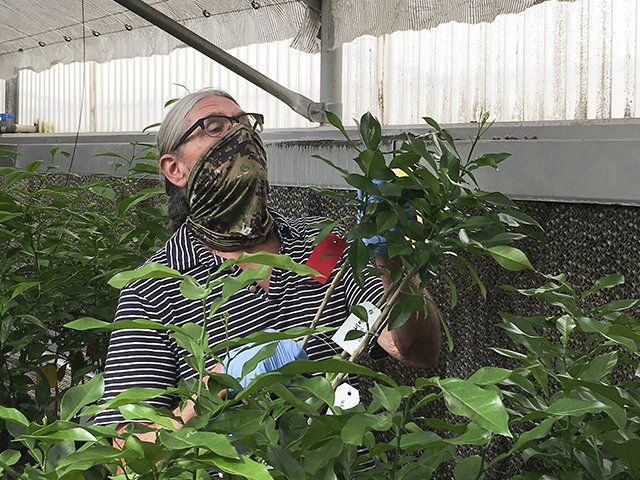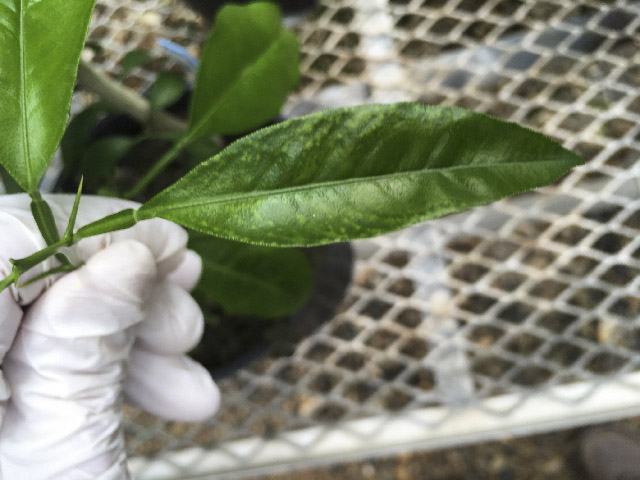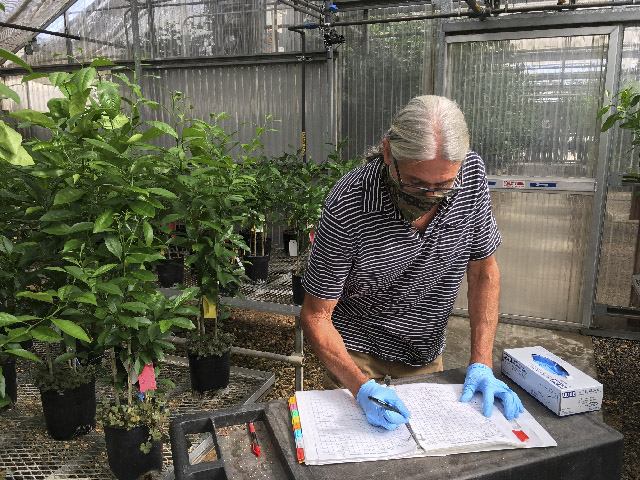| ARS at Work - National Clonal Germplasm Repository for Citrus and Dates |

|

ARS scientists, researchers, and support staff across the country continue to work through this challenging time. Researchers and technicians at the National Clonal Germplasm Repository for Citrus & Dates in Riverside, CA (USDA-ARS-NCGRCD), are indexing plants, a part of the sanitation (cleanup) process for citrus germplasm. This is a necessary practice before the release of material from quarantine to the public. Symptoms are sometimes transient, so if the index is not observed attentively, all the previous work from the past year (or more) may be lost. Although lab tests are also used, they are performed quickly and, in some cases, the samples can be stored to resume with little time lost. In contrast, the plants continue to grow once the biological index is started; therefore, they must be observed to ensure the test is completed.
- During biological indexing at the USDA-ARS-NCGRCD, horticulturist Robert Krueger inspects a “sour orange” indicator plant displaying symptoms of the disease Citrus vein enation. These symptoms are sometimes transient, so if the index is not observed for several months, all the previous work may be lost. Once the biological index is started, the plants continue to grow and must be observed until the test’s completion.
- At the USDA-ARS-NCGRCD, horticulturist Robert Krueger reads positive (infected) symptoms of the “Concave gum” disease control on the “Dweet tangor” indicator. These tests are conducted on site to keep the plants healthy, ensure the plants are watered, ensure greenhouses are functioning, and facilities are secure. Other steps in the sanitation process include lab testing and therapy.
- During biological indexing of citrus at the USDA-ARS-NCGRCD, horticulturist Robert Krueger documents any changes he observes in plant health or visible symptoms as part of testing before the release of material from quarantine to the public.



